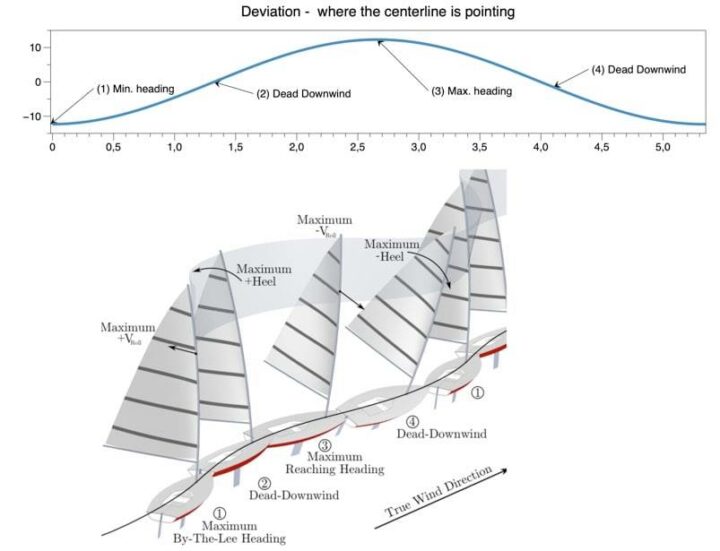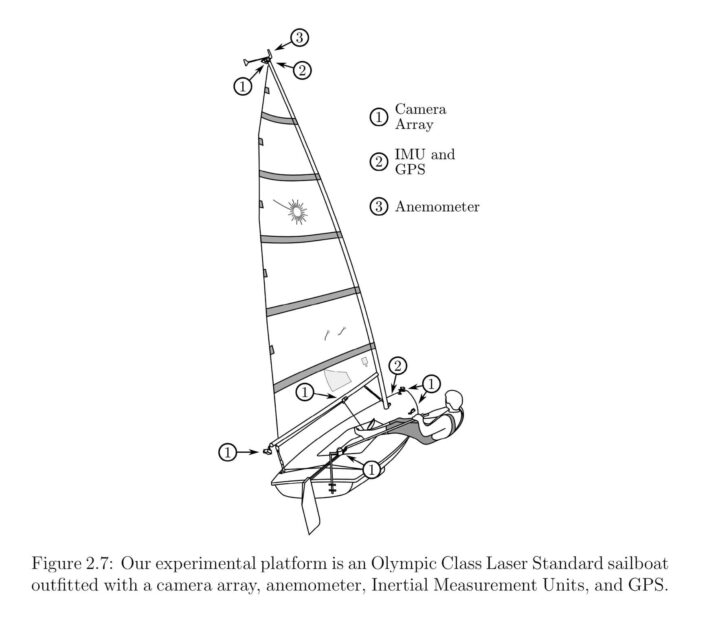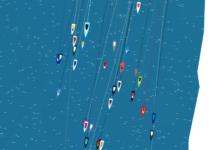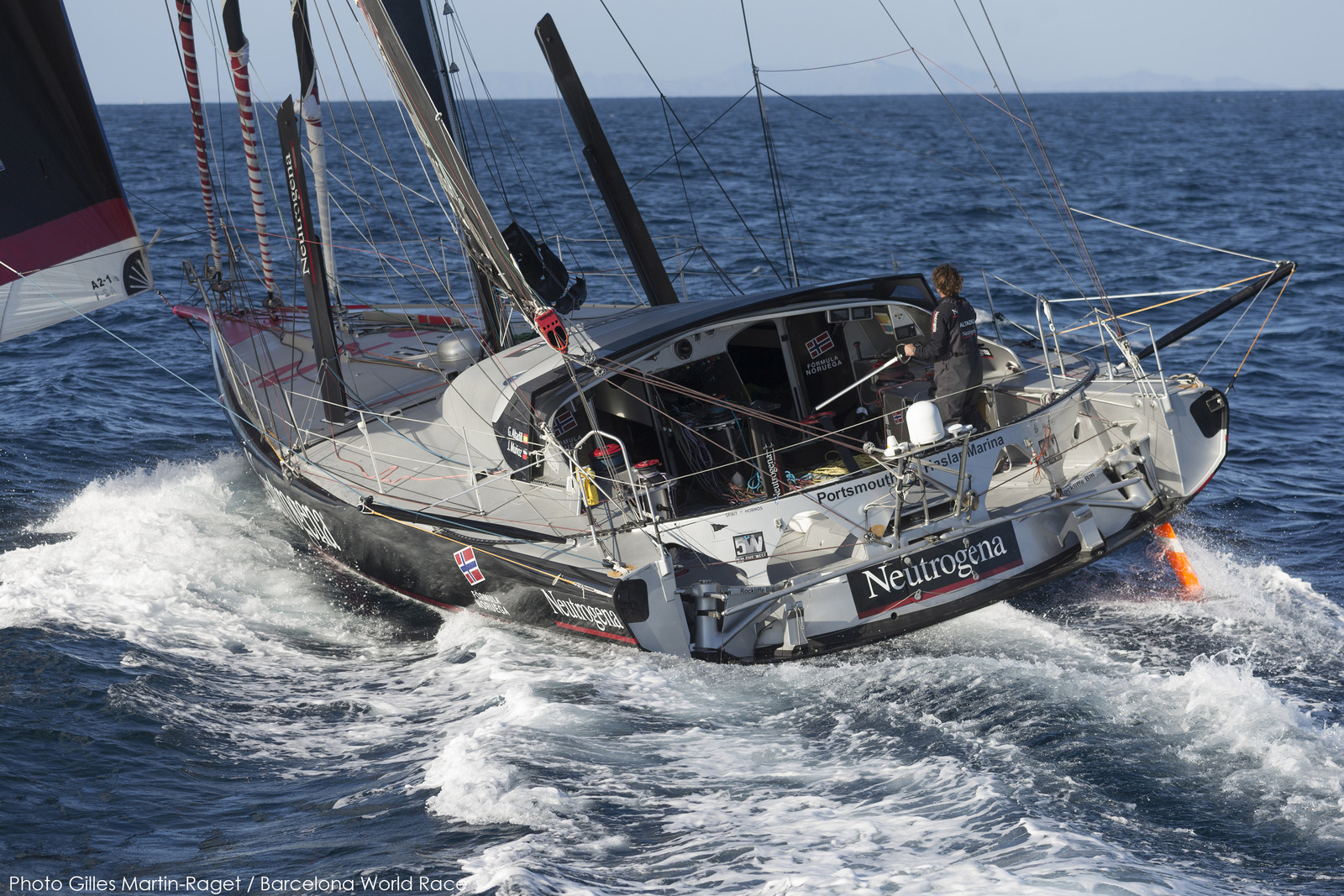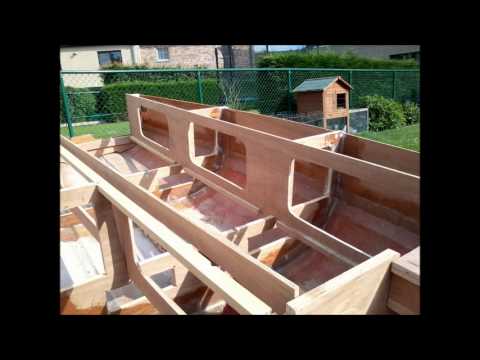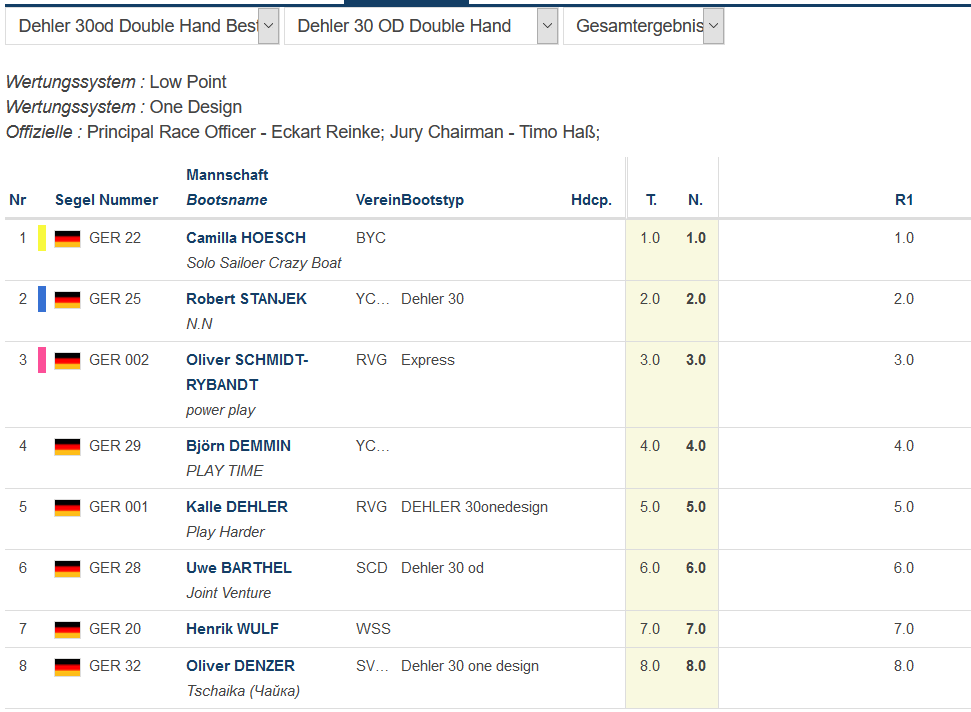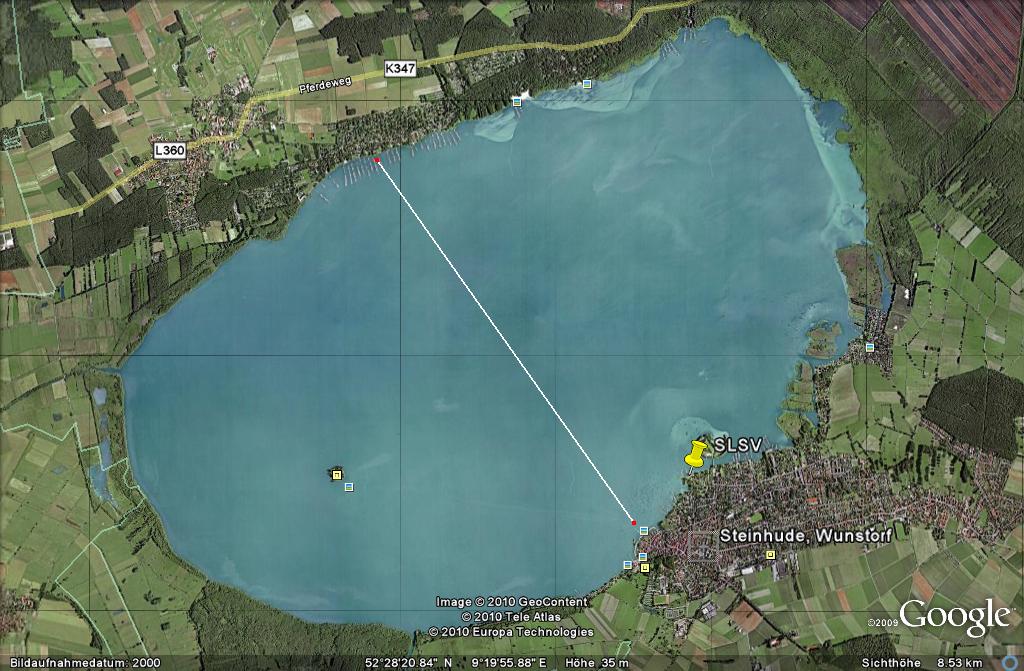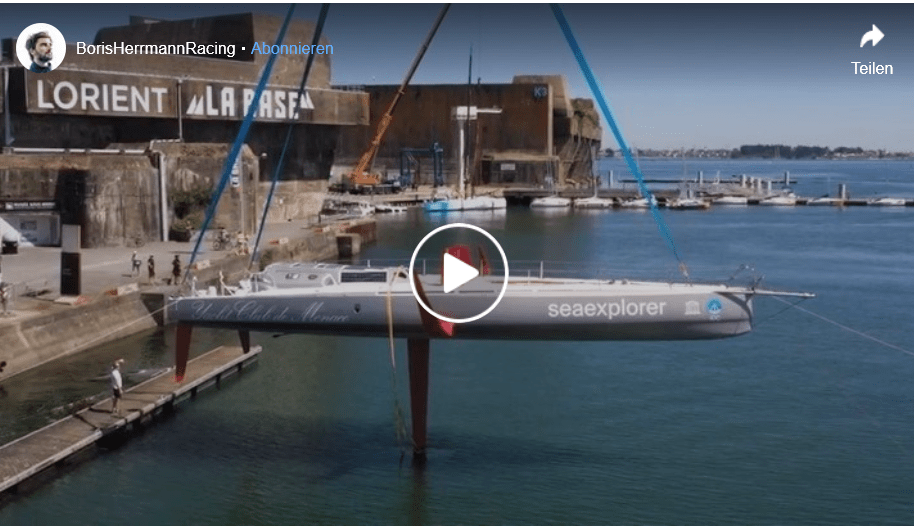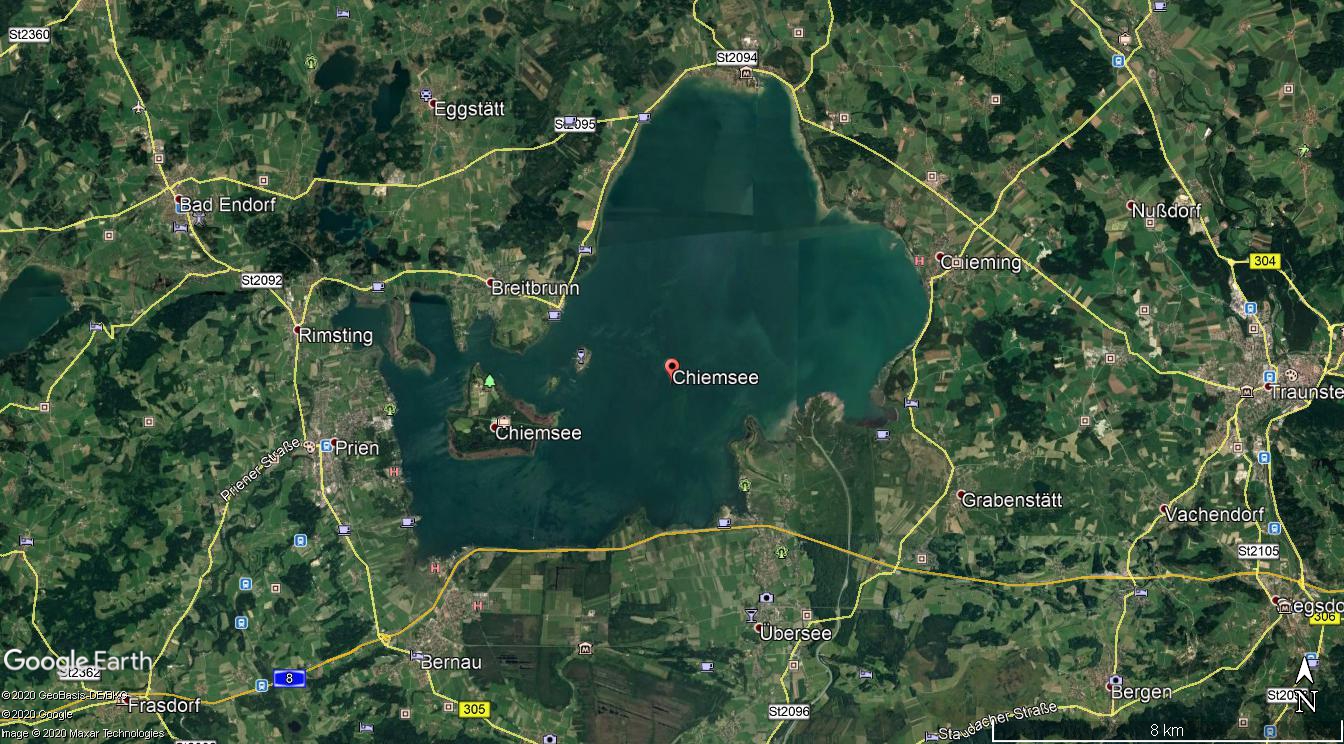Mikko Brummer
This simulation was inspired by Riley Schutt’s doctoral dissertation „UNSTEADY AERODYNAMICS OF SAILING MANEUVERS AND KINETIC TECHNIQUES“ at Cornell University. Shutt and his team equipped a Laser with an array of camera’s & sensors to record all the motions and sail shape changes of the boat while sailing. In addition to the S-turn downwind sailing technique, he looked at leech flicking upwind and roll tacking.
In our first simulation, we look at the S-turns. Quite complex, with simultaneous heading changes (S-turns), rolling of the boat (heel), sheeting & twisting of the sail and the sailor’s motions. We also added a Windex to the mast top to record the apparent wind changes (inset). The variation of the apparent wind angle during one S-turn cycle is up to 90 degrees.
In the first runs, the rock&roll increases the driving force of the sail quite dramatically, 45-50%. The increase appears to be sensitive to the timing of the mainsheet adjustments, and of course, the amount of roll.
We can look at the optimal synchronization of the motions through simulation, coupled with the sail adjustment. Ideally, the boat is turned through the variation of the heel, the rudder only following the S-turns. More results later.
